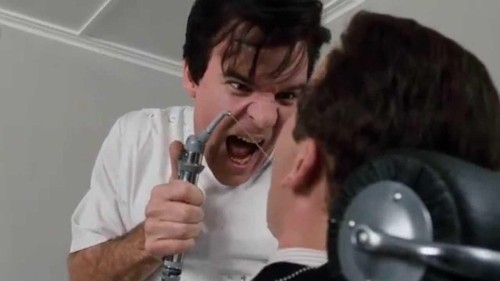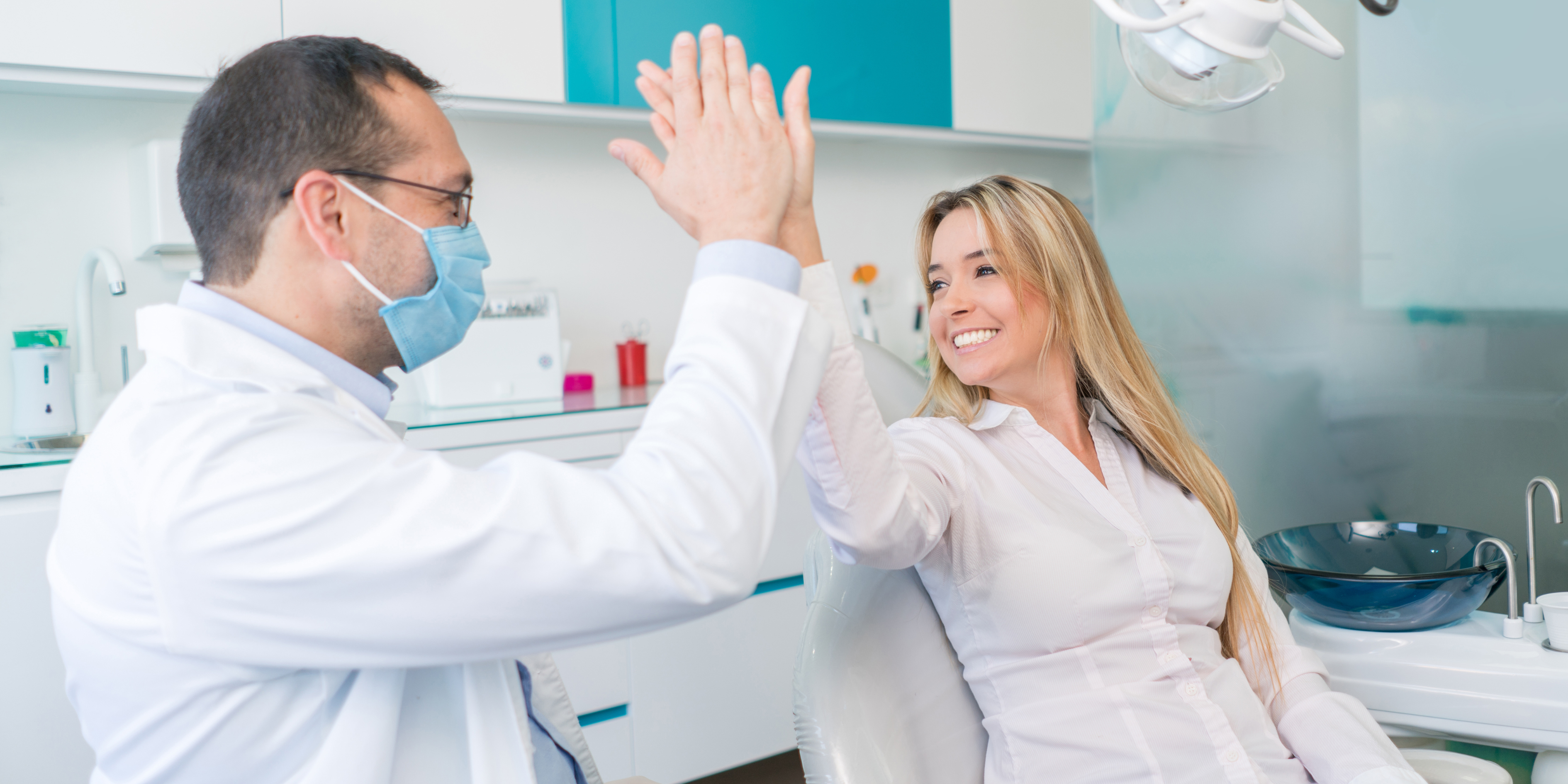Of course, we are referring to ‘consumerism’ when we talk about the ‘c’ word. The rise of consumerism has now reshaped almost every industry we commonly interact with – retail, finance, transportation – the list goes on. Healthcare, including dentistry, seems to be the next industry to feel the pressure to adapt to this phenomenon. Historically, the paternalistic model of care has been acceptable and even encouraged – arguably fuelling negative stereotypes in the community, one famously portrayed by the talented Steve Martin in Little Shop of Horrors.
Less than a year ago, healthcare being subject to this pressure was noticeable however now in an emerging new post-covid era, this pressure has intensified and is already reshaping this 10 trillion-dollar global industry. It was always inevitable that people who expect to be treated as savvy consumers in almost every purchase they make – having a choice, convenience, and fair prices at their fingertips – apply such expectations to their health care providers.
The 2019 Deloitte Survey of Global Heath Care uncovered some interesting points specifically to Australia and 7 other countries in Europe, Asia, and North America:
- Patients are willing to share personal and health information, especially with their doctor digitally.
- Most patients believe they should own their personal health records.
- Patients have access to (and use) tools that keep them healthy.
- Patients are no longer passive; they demand transparency, convenience, and access. They also are willing to disagree with their doctors and are engaging in more preventive behaviors than in the past, such as personalized exercise and nutrition.
- Patients use technology and otherwise take charge of their health. Those who don’t currently use technology are interested, suggesting that the right tools haven’t been built yet.
There has been much debate on whether dentistry is a commodity or not. Is a filling – or is it dependent on the practitioner’s skill level and the facility’s quality? This article, whilst addressing this argument somewhat, covers the overarching issue of consumerism in which commoditization falls under, in the writer’s opinion. Consumerism is the promotion and protection of the interests of the consumer – the patient. Commoditization is the loss of any unique or individual factors of a product or service so they all are viewed the same. Consumerism within dentistry could very easily lead to increased commoditization but the rise of consumerism won’t necessarily lead to a commodity-style industry. One may argue that an empowered patient will actually improve outcomes as market pressure builds.
Current Landscape:
Over recent years, there has been a shift to focus on patient experience however the disparity between what practitioners feel they are delivering versus how the patient feels is still quite contrasting. A recent survey in the U.S. shows that 63% of providers feel that they deliver in providing a great patient experience whilst only 40% of patients reciprocated this feeling. As big players disrupt more industries, the expectations of consumers shift and grow which in turn will impact the same of the healthcare consumer.
We also have the self-regulated nature of dentistry. Historically, the industry would decide what ‘good’ was for the patient. This culture is on a collision course with the expectations of the modern consumer, and the winner has already been decided. The rise and rise of tech solutions that empower the consumer have stirred up an unmoveable expectation. Disruption is waiting.
This shift to consumerism needs to be managed responsibly and ethically so all players can be content. The trust of self-regulation has given the industry a privilege and this privilege now needs to be leveraged more than ever – when it is being challenged the most – before other players take advantage of the landscape.
Emerging trends:
McKinsey and Company in 2016 wrote “The impact of engaged, tech-enabled healthcare consumers may not be felt for five to ten years, but by then it may be too late. In other industries, many of the companies that failed to prepare in advance for the impact of digital/mobile technologies lost out to more nimble new entrants”. This statement was made without the knowledge of the current pandemic. Covid has accelerated this shift and we are already seeing behaviors changing from the broader community, even older generations.
Despite this shift, it is heart-warming to read one of the main factors still influencing consumer choice of healthcare provider in the 2020 Deloitte Health Care Survey: doctors who listen to/care about them, doctors who don’t rush, and clear communication. Can this need for empowerment from the tech-enabled consumer also satisfy their need for a connected and personal delivery of care? We are yet to see – but with the post covid acceleration of tech take-up – it won’t be long before we see trends appearing. Typically the choice is made between speed, quality, and cost – one suffers whilst one takes over. COVID-19 sweeping the globe has shown us that well-designed technology delivered in a timely fashion and with the right financial incentives, has empowered medicos to deliver a better, more convenient, and faster service at a lower cost with the advent of telehealth.
What does this mean for dentistry?
The shift towards consumerism could further shift us to a basic commoditization model. However, in many commodity-based markets, we see various levels of product. As a basic example a Mercedes-Benz is not compared with a Toyota if that customer is seeking a Mercedes-Benz level of service/product: the car however still performs the same basic functions of what a car should.
As mentioned previously, the Deloitte Health care survey still shows that what is important to patients is the experience: authentic care, time, and communication. Now more than ever the industry needs to focus on managing the experience of the patients.
As consumer-minded patients become more and more empowered and increasingly numbered, complacency will become fatal for a dental practice. No longer can equipment, location, and a title of ‘dentist’ at the local shopping center entitle it to success.
The dental industry sees consumerism as an enemy, an enemy that seeks to take control away from them, reduces the capacity to provide good care, and perhaps drive profits down. These fears are not without merit – but regardless, this trend is upon it and it needs to respond to ensure this lands appropriately for the industry and for patients. Yes, as health care providers there is a unique insight as to what is right for the patient – one that can be very hard to communicate quickly and effectively. Eventually, the power of the market will bring about an equalization of price to service levels and bring more transparency and accountability. It will be an interesting road ahead but as an industry, we need to be prudent to ensure that clinical and service standards stay strong during the digital transition – this is where the industry’s long history of professional values needs to stay strong.
Private practices should consider the following points:
- Reinvent your marketing strategy. Most dentists are typically too busy in their clinical role to be reinventing or even developing a marketing strategy. The digital world is here to stay and needs to be embraced by private dental practices. If there is no digital component to your marketing strategy, you aren’t even in the race to find new patients. Patients both existing and new demand that there be a digital pathway to find and interact with your practice. Develop a strategy or relook at your current one – or if time-poor, delegate.
- Focus on patient experience. Digital doesn’t have to mean a lack of patient experience. The digitally-enabled consumer has much more choice and your reputation online will be critical to luring in this segment. Leverage off exceptional authentic service and communicate this to your digital audience.
- Act on increased price sensitivity. With the advent of price transparency and low-cost business models – ensure your pricing is able to cater to the more price-sensitive consumer. Having lower-cost options doesn’t mean you need to cut your profit and run on a lean margin – ensure you stay flexible.
- Embrace the ‘larger pie’ that consumer-driven dental care will bring. With all the fear around a consumer-driven industry, we forget the benefits it brings. In years gone by, most dental work has been ‘prescribed’ or ‘recommended’ by clinicians. Today we see elective and cosmetic dental work daily in most private practices. This appetite has provided a large boost of revenue to the industry and is only set to increase. The catch with this is always the ethics around some cosmetic work – which is a decision for each individual practitioner.
- Be aware of the empowered patient. Make sure your communication style is matched to your patient. The paternalistic model of care is dead or dying. Your patients more than ever wish to be involved in their health care decisions – and are typically armed with a lot of knowledge. Acknowledge the patient’s role in the decisions required and address fears. Make them feel important and valued in the process.
Consumerism is upon the dental industry whether it likes it or not. How it responds is yet to be seen. Let’s hope like in all industries, the presence of market pressure can ensure patients drive change to what is expected and needed, or at least feel more empowered and accountable. In addition, it might ensure that Steve Martin’s character from Little Shop of Horrors, Orin Scrivello, stays on the screen and not practicing dentistry.
Join AirSmile Today!
Find your perfect dentist in minutes.
Free to Join







